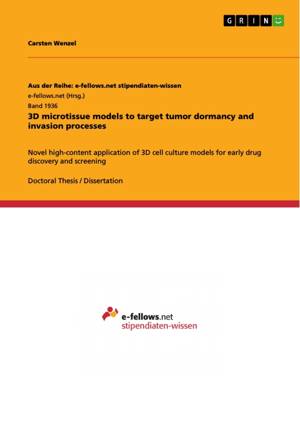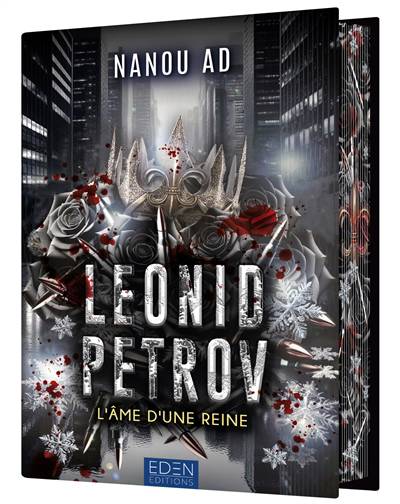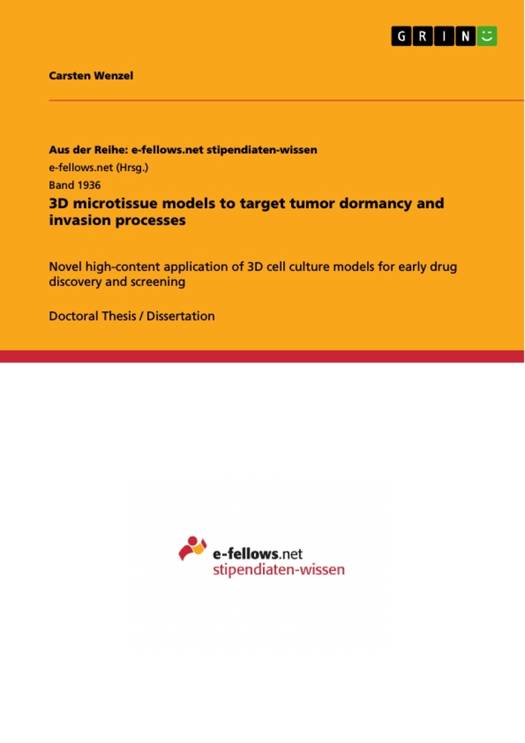
- Retrait gratuit dans votre magasin Club
- 7.000.000 titres dans notre catalogue
- Payer en toute sécurité
- Toujours un magasin près de chez vous
- Retrait gratuit dans votre magasin Club
- 7.000.0000 titres dans notre catalogue
- Payer en toute sécurité
- Toujours un magasin près de chez vous
3D microtissue models to target tumor dormancy and invasion processes
Novel high-content application of 3D cell culture models for early drug discovery and screening
Carsten Wenzel
147,45 €
+ 294 points
Description
Doctoral Thesis / Dissertation from the year 2014 in the subject Medicine - Biomedical Engineering, grade: 1,0, Technical University of Berlin (Biotechnologie), language: English, abstract: Despite all efforts to discover novel therapeutic options to treat cancer the disease remains devastating causing more than 14 million deaths in 2012 - and the trend is rising. Some parts of the preclinical drug discovery process rely on cell culture models to reproduce the pathophysiological features of cancer in in vitro experiments. These cellular models are then used in screening campaigns that aim to identify substances such as small molecules, peptides, or interfering RNA that alter the phenotype of a cancer cell in a desired manner. One of the main properties of cancer cells is their uncontrolled cell division. Accordingly, the cell cycle is a major target for chemotherapy, but resistance to chemotherapy frequently causes treatment failure in patients with advanced and inoperable cancer. As the distance from supplying blood vessels increases, oxygen and nutrient concentrations decrease and cancer cells react by halting cell cycle progression and entering a dormant state. As cytostatic drugs mainly target proliferating cells, cancer cell dormancy is considered a major resistance mechanism to this class of anti-cancer drugs. Therefore, substances that target cancer cells in poorly vascularized tumor regions have the potential to enhance cytostatic-based chemotherapy in solid tumors. Multicellular tumor spheroids (MCTS) allow for three-dimensional growth conditions, thus reproducing several parameters of the tumor microenvironment, including oxygen and nutrient gradients as well as the development of dormant tumor regions. Here, the evaluation of a 3D cell culture high-content screening system led to the identification of nine substances from two commercially available drug libraries that specifically target cells in inner MCTS core regions. Subsequently, the mode of actio
Spécifications
Parties prenantes
- Auteur(s) :
- Editeur:
Contenu
- Nombre de pages :
- 148
- Langue:
- Anglais
- Collection :
Caractéristiques
- EAN:
- 9783668251731
- Date de parution :
- 12-08-16
- Format:
- Livre broché
- Format numérique:
- Trade paperback (VS)
- Dimensions :
- 148 mm x 210 mm
- Poids :
- 199 g

Les avis
Nous publions uniquement les avis qui respectent les conditions requises. Consultez nos conditions pour les avis.






